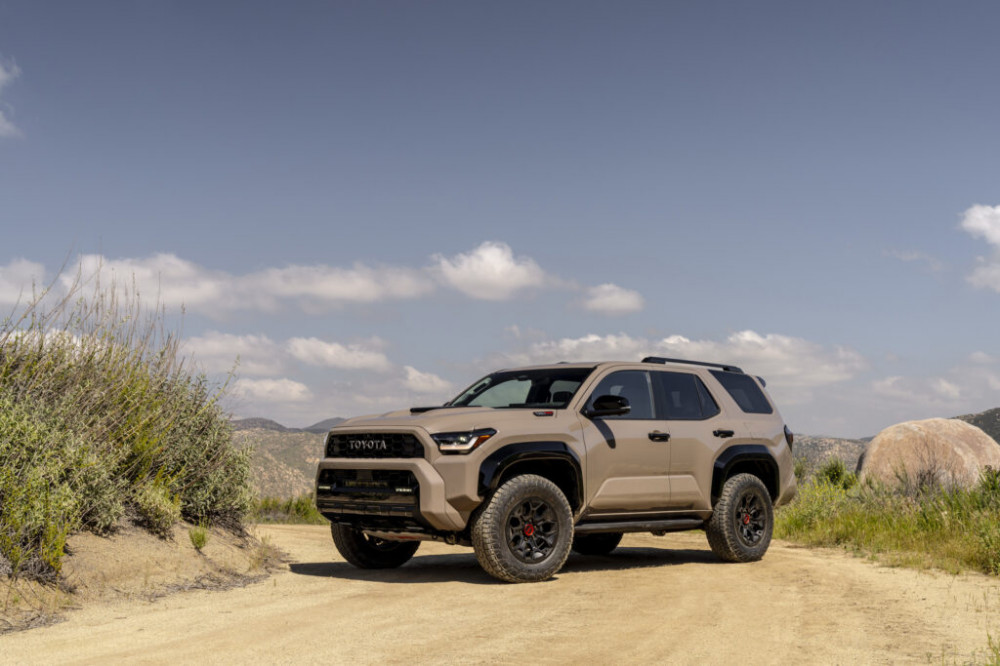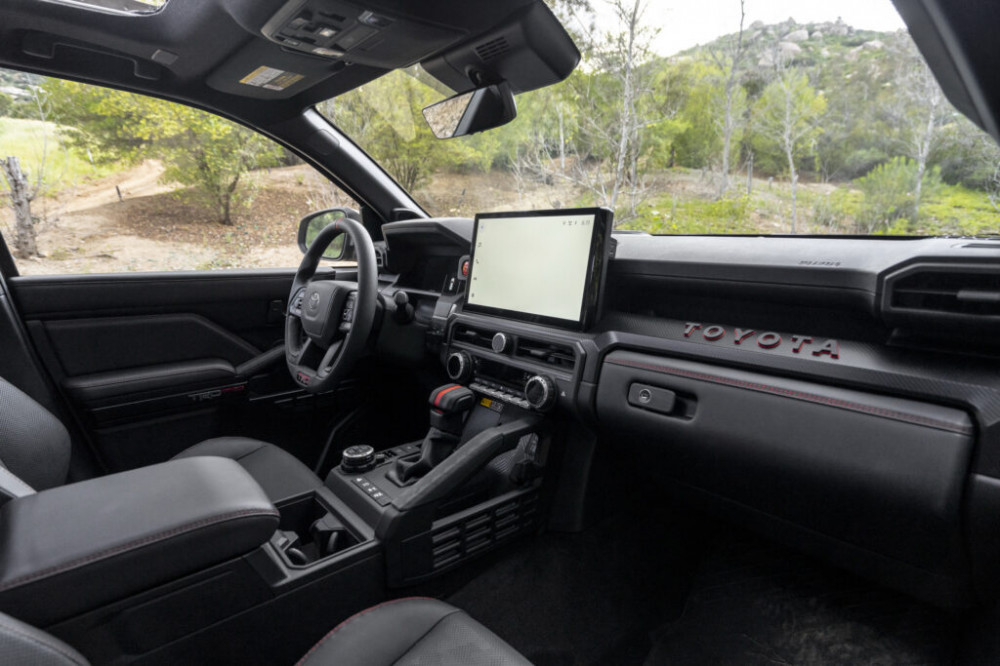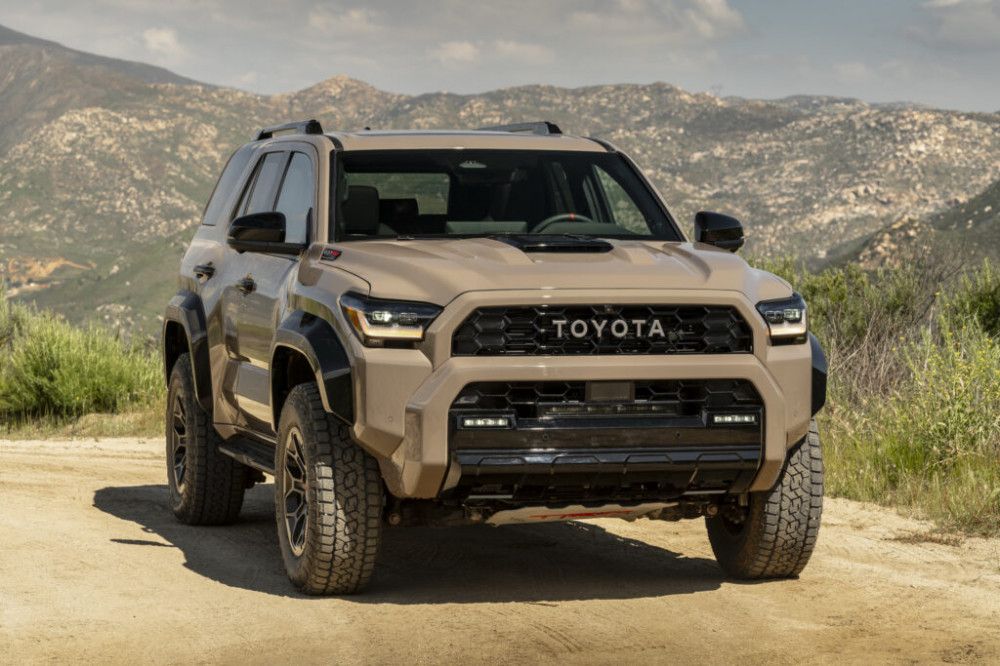Toyota's Trail-Ready Titan: An In-Depth Look At The 2025 4Runner

by AutoExpert | 10 April, 2024
Finally, the fifth-generation Toyota 4Runner is going out of production to make way for the first completely revamped 4Runner since the Bush administration. The 4Runner will forego the V6 in favor of two new four-cylinder engines that provide greater power; they will be available later this autumn as models for 2025.
Two new trim levels, Trailhunter and Platinum, are joining all the additional goodies. The 2025 Toyota 4Runner's resemblance to the latest Tacoma pickup truck generation is undeniable.

While each truck's front end has its own unique personality, they all share a sharply angular design. Furthermore, both cars share the lower beltline design element that extends from the back of the front wheel well to the back of the cabin. Neither the 4Runner's rugged good looks nor its legendary Jeep Wrangler charm can compare to those of the Ford Bronco or Jeep Wrangler.
But that's the whole point of the Land Cruiser. The 4Runner and Tacoma have very similar cabins. Indeed, the central tunnel segments of both vehicles are identical in design, down to the matching cargo holdalls and grab handles. The luggage areas, infotainment systems, and cupholders of both cars are similar. It would be difficult to tell the two versions apart from behind the wheel without the dashboard graphics. One thing that stands out is how different the 4Runner is from the new Land Cruiser.
The base and drivetrain components are among their many shared features, yet the interiors couldn't be more different. The Land Cruiser gives off an air of refined luxury, while the 4Runner gives off an impression of raw aggression. The availability of a third row of seats is another point of differentiation; the Land Cruiser does not have this feature. The 4Runner is even more unique than its predecessor, thanks to the return of the iconic power rear window.
The Tacoma DNA makes a lot of sense, and it's not just because they're related. Never lose sight of the fact that the first 4Runner was really a modified Toyota pickup. Using its own dedicated platform didn't happen for the 4Runner until 1996. The sixth generation returns to its origins. Regarding the drivetrain, it goes even beyond. In general, the 4Runner is larger than its forerunner.

It now has a wheelbase of 112.2 inches (2,844 mm), a width of 77.8 inches (1,976 mm), and a length of 194.9 inches (4,950 mm) thanks to its construction on Toyota's TNGA-F platform, which it shares with the new Land Cruiser, Lexus GX, Tundra, and Tacoma. In case you were curious, the Tacoma's wheelbase is 131.9 inches, whereas this one is just under 20 inches (508 mm) shorter.
According to those measurements, the new 2025 4Runner is 2.4 inches (61 mm) larger on the wheelbase, which allows for more interior room, and it's 4.7 inches (119 mm) longer and 2 inches (51 mm) wider than its predecessor. While they share almost identical dimensions in terms of width (77.9 inches) and wheelbase (112.2 inches), the new 4Runner is 1.1 inches (28 mm) longer than the new (North American) Land Cruiser.
An approach angle of 32 degrees and a departure angle of 24 degrees are the results of all of this, which is somewhat lower than the 33-degree approach angle and 26-degree departure angle of the departing model. Even while Toyota hasn't said if this is true for all 4Runner models, it does have 9.2 inches (233 mm) of ground clearance. You may anticipate a little more ground clearance on the Trailhunter and TRD Pro models because of their distinct suspension systems.
You may now choose between 4WD-High and 4WD-Low modes on the new 4Runner's improved Multi-Terrain Select system, much as on previous Toyota off-roaders. To maximize traction control, this device has settings for three different terrains: mud, dirt, and sand. With an electrically controlled locking rear differential that guarantees balanced power distribution, the Crawl Control feature, which is quieter, also acts as a low-speed off-road cruise control.

Additional assistance for descending is provided via Downhill Assist Control, which controls the vehicle's speed. In order to understand the trim levels, it is necessary to understand why Toyota decided to forego the proven and reliable V6 engine. Although the choice to eliminate the V6 won't sit well with all 4Runner fans, the new basic engine manages to provide more power while being smaller. A 2.4-liter turbocharged engine with 278 horsepower (207 kW) and 317 pound-feet (429 Newton-meters) of torque is known as the i-Force.
You may recognize it from its successful deployment in the new Tacoma. We anticipate even more impressive performance with the i-Force MAX edition. Equipped with 326 horsepower (243 kW) and 465 lb-ft (629 Nm) of torque, the new 4Runner is capable of towing up to 6,000 pounds. The i-Force Max and the entry-level model both have an eight-speed automatic transmission. Unfortunately, the 4Runner does not come with the manual transmission option that is offered on the Tacoma. Regular, part-time, and full-time four-wheel drive configurations will be available. An automated limited-slip differential will be standard on RWD variants.
An automated limited-slip differential and a two-speed transfer case will be standard on 4WD models. Even though Toyota hasn't said it yet, we anticipate that the new 4Runner will have better fuel efficiency than the 2024 model, at least on paper. Although it was a classic engine, the old V6 was notoriously thirsty, getting just 16 city mpg and 19 highway mpg at best. There are nine available trim levels for the 4Runner, ranging from opulent to rough, demonstrating Toyota's desire to satisfy as many customers as possible. Every one of these models falls under the umbrella of "i-Force," and it comes in a variety of flavors: SR5, TRD Sport, TRD Sport Premium, Limited, TRD Pro, TRD Off-Road, Trailhunter, and Platinum.
While the Tacoma didn't spill the beans on every single trim, it did offer us a good sense of what to anticipate. The SR5 serves as the starting point. The new 4Runner is expected to come with 17-inch wheels, LED exterior lighting, and keyless entry, replacing the previous Sport Rally Five-Speed. We can confirm that the standard system has an 8-inch infotainment system and a 7-inch gauge cluster. Additionally, the TRD Sport will most likely come with bigger wheels, a suspension that has been fine-tuned by TRD, and maybe a somewhat better sound system. The next trim level is the TRD Sport Premium, which will most likely include more plush interior features like a sunroof and better seats.

You can only get the base i-Force engine with any of these trim levels. If you want the i-Force MAX, you'll have to choose the Limited trim or above, since it's an optional feature. More high-end amenities, like the 14-inch infotainment system that Toyota hinted at last week, might be available in this model. Additionally, it may come with a 12.3-inch cluster of gauges. The more powerful engine is also available on the TRD Off-Road and TRD Off-Road Premium. All four-wheel drive should be standard on each of them as well. It has been verified that the TRD Off-Road has a locking rear differential. The 4Runner will not be receiving the Iso-Sport seats that are available on the Tacoma.
Meanwhile, the i-Force MAX is available in three different standard trims, two of which are completely new. Along with the new Trailhunter and Platinum trims, there is also the existing TRD Pro trim. The locking rear diff is also standard on the TRD Pro and the Trailhunter. The brand-new Trailhunter is the subject of its own in-depth analysis. For those who are interested, let it suffice to state that it is the new king of turnkey overlanding SUVs. A 14-inch touchscreen system, better upholstery, and a 360-degree video system are just a few of the inside features that the new Platinum will get from Toyota.
Take, for instance, the detachable JBL speaker mounted on the dashboard, the rear power outlet, and the air compressor that comes standard on board. To round up the 4Runner story, we also need to talk about safety. All models have Toyota's Safety Sense 3.0 suite of technologies as standard equipment. Adaptive cruise control, lane-keeping assist, emergency braking, proactive driving aid, pedestrian recognition, pre-collision warning, and lane-departure warning are all part of it.
Similar to Ford and Jeep, Toyota offers a three-year or 36,000-mile limited warranty. A guarantee covering the hybrid-related parts of the i-Force MAX is in place for eight years or 100,000 miles. Free factory-scheduled maintenance for two years or 25,000 miles is available on all 4Runners. That's an improvement over a Bronco but a year shorter than a Wrangler. Although the 4Runner's price and fuel efficiency details are still under wraps, Toyota has confirmed that sales will begin in the autumn.







































